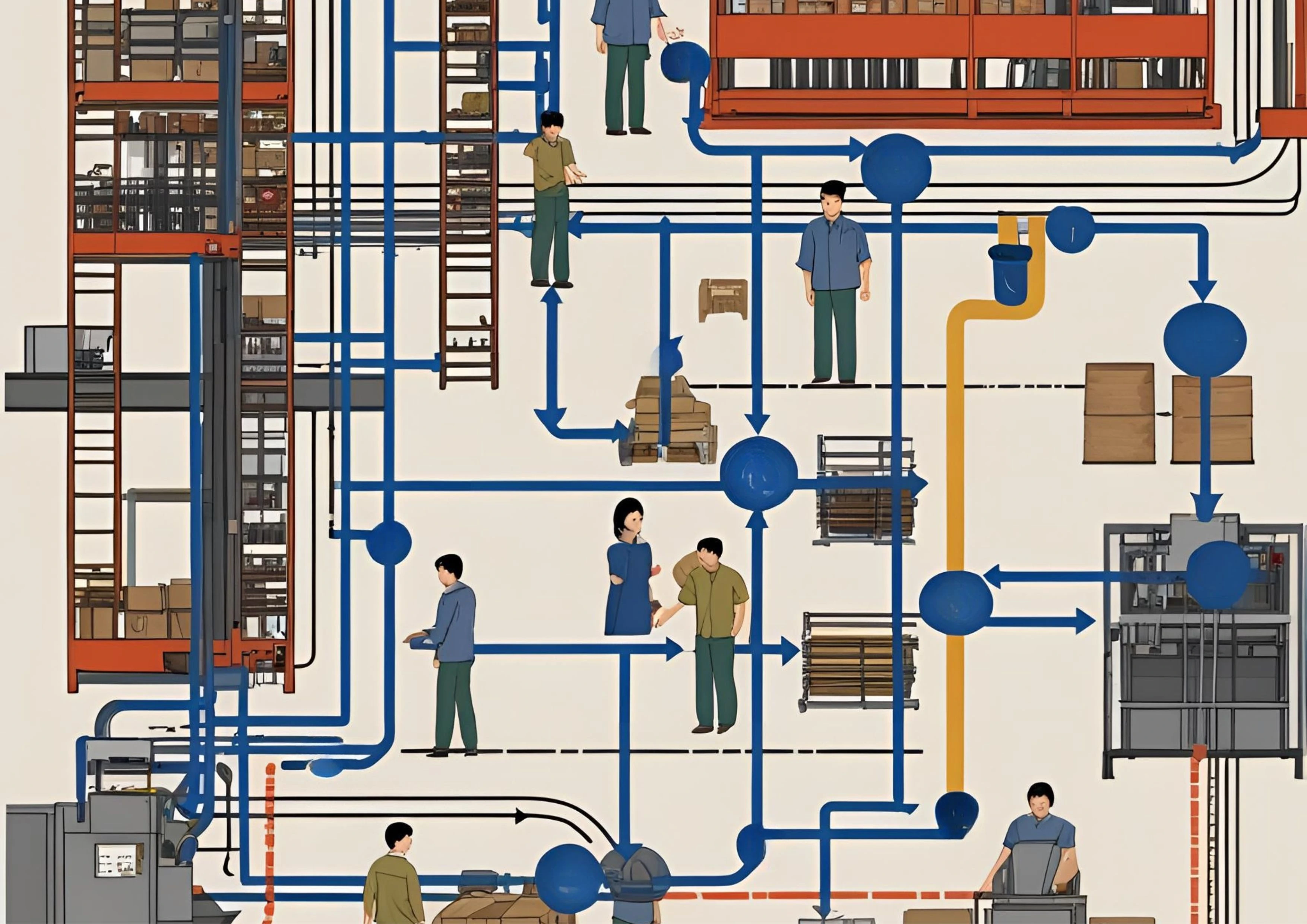The success of any food processing or manufacturing facility heavily relies on the design and implementation of an efficient Man-Material Movement Layout. As a crucial component of facility planning, it determines the flow of personnel, materials, and equipment, optimizing operations, minimizing bottlenecks, and enhancing productivity.
Understanding Man-Material Movement Layout
The Man-Material Movement Layout focuses on various elements to ensure streamlined facility operations:
- Workflow Optimization: Essential for ensuring systematic and efficient operations within the facility.
- Workstation Placement: Strategic placement is vital for smooth processes and enhanced productivity.
- Material Handling Systems: Effective systems reduce handling time and increase efficiency.
- Safety Considerations: Vital for protecting personnel and minimizing accident risks.
- Ergonomics and Accessibility: Supports worker well-being and operational efficiency.
- Traffic Management: Organized pathways to reduce congestion and improve flow.
- Storage and Inventory Placement: Strategic placement ensures easy access and efficient stock management.
- Facility Layout Integration: Seamlessly connects different operational areas for unified operations.
Key Requirements for Effective Layout Design
A well-designed Man-Material Movement Layout provides several advantages in turnkey solutions:
- Workflow Efficiency: Ensures that operations carry on without unnecessary delays.
- Productivity Enhancement: Boosts overall output through time-efficient processes.
- Safety Considerations: Proactively prevents accidents and maintains a safe working environment.
- Ergonomics and Accessibility: Ensures that every employee can perform at their best.
- Material Flow Optimization: Guarantees that raw materials and finished goods move efficiently across different sections.
- Integration with Facility Layout: Harmonizes with existing plant structures for cohesive operations.
- Scalability and Flexibility: Adaptable to future changes and expansion.
- Cost Optimization: Reduces operation costs through efficient design.
Implementing the Layout with Expert Consultation
Integrating a proficient Man-Material Movement Layout requires the guidance of experienced professionals, such as PMG, who offer expert food business consultancy services. Their role covers:
- Stakeholder Engagement: Involves the relevant parties to ensure aligned objectives.
- Workflow Analysis and Optimization: Conducts detailed assessments for improved processes.
- Space Planning and Utilization: Ensures optimal use of available spaces.
- Collaboration with Design Teams: Works hand-in-hand with engineers for practical layouts.
- Change Management: Prepares the facility for transition and new implementations.
- Quality Control and Assurance: Maintains rigorous standards during the layout execution.
Conclusion
An effectively designed Man-Material Movement Layout is indispensable for the food processing and manufacturing industry. It facilitates efficient operations, enhances safety, and reduces operational costs, contributing significantly to overall project success. Seeking guidance from professional food engineering consultants like PMG can provide the necessary insights and expertise for optimal layout implementation.
 PMG stands for Projects Management Group. We provide state-of-the-art Engineering Services to build world-class food processing factories.
PMG stands for Projects Management Group. We provide state-of-the-art Engineering Services to build world-class food processing factories.  Engineering is the difference between Chaos and Excellence. If you are going to do it, do it right.
Engineering is the difference between Chaos and Excellence. If you are going to do it, do it right.  Explore the diverse range of Products in the Food Processing Industry.
Explore the diverse range of Products in the Food Processing Industry.  Explore the technologies at the heart of the the Food Processing Industry.
Explore the technologies at the heart of the the Food Processing Industry. 


 Back
Back 



